#Countess of Landsfeld
Text
#OTD in 1861 – Death of dancer and courtesan, Lola Montez (Marie Gilbert), in New York. She was born in Grange, Co Sligo.
Famous both for her self-created ‘Spider Dance’, as well as being the inspiration for the expression, ‘Whatever Lola wants, Lola gets.’ Barry Manilow’s 1978 smash hit “Copacabana” tells the story of: ‘Lola, she was a showgirl, with yellow feathers in her hair and a dress cut down to there”. Girlfriend of bartender Tony at the Copacabana, Lola was a character thought up by Manilow, although he…
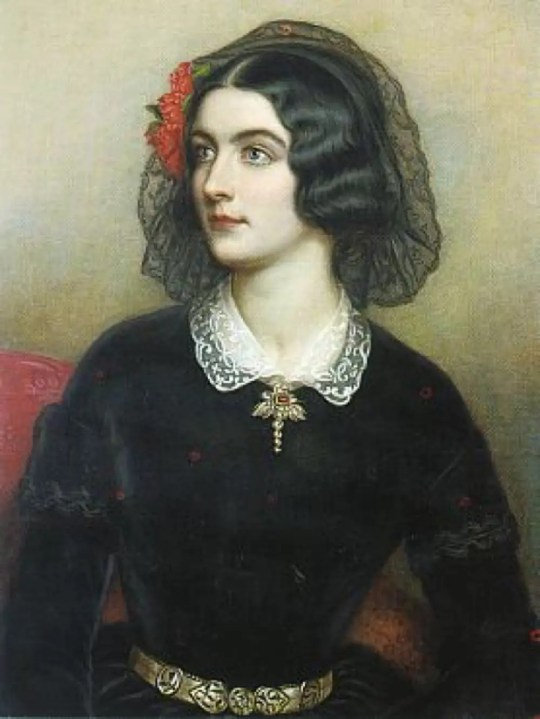
View On WordPress
#"Spanish dancer"#Australia#California#Co. Sligo#Countess of Landsfeld#Donna Lola Montez#Entertainer#France#Grange#King Ludwig I of Bavaria#lecturer#Lola Montez#London#Munich#New York City#Spider Dance#Switzerland
7 notes
·
View notes
Photo

Karl Joseph Stieler (German, 1770-1858)
Porträt der Lola Montez, 1847
Eliza Rosanna Gilbert, Countess of Landsfeld, better known by the stage name Lola Montez, was an Irish dancer and actress who became famous as a Spanish dancer, courtesan, and mistress of King Ludwig I of Bavaria, who made her Gräfin von Landsfeld.
#art#fine art#classical art#german#germany#germanic#german art#irish#spanish#Karl Joseph Stieler#european#brunette#female portrait#lola montez#eliza rosanna gilbert#countess of landsfeld#countess
109 notes
·
View notes
Photo
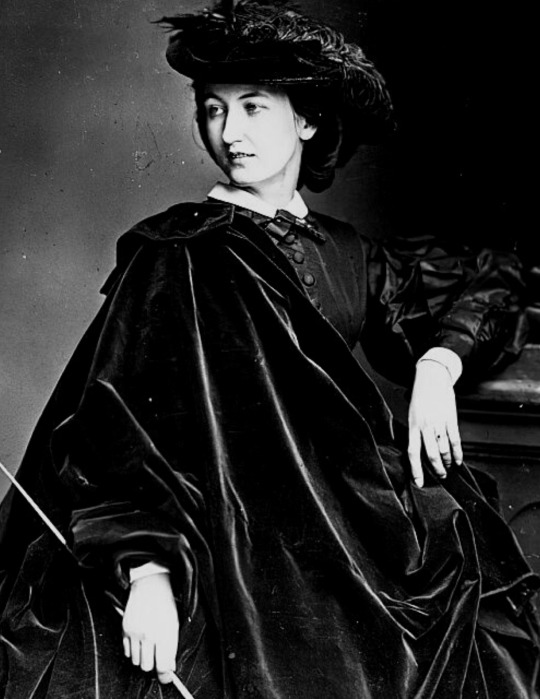
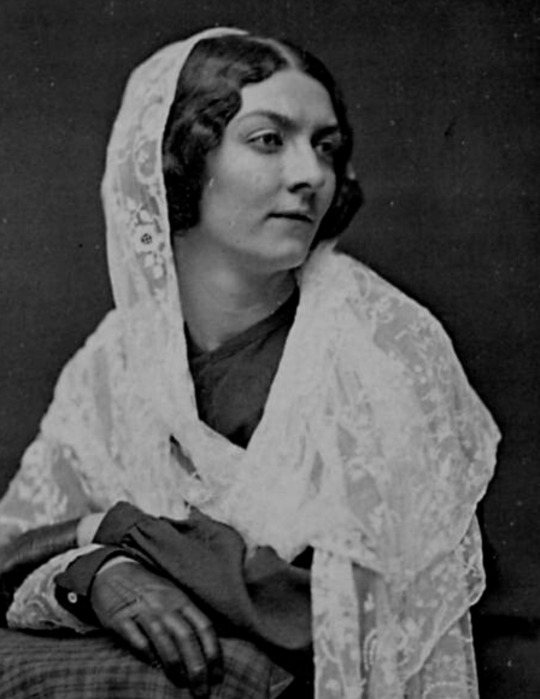
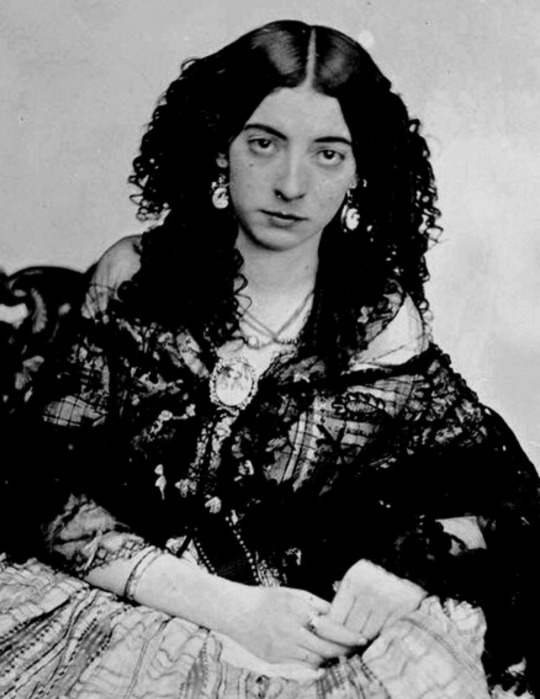
eliza rosanna gilbert (1821-1861) known by her stage name lola montez was an irish actress & dancer who became famous as a spanish dancer, courtesan, and mistress of king ludwig i of bavaria, who made her gräfin von landsfeld. her ability to manipulate the king was so great that the minister of state, karl von abel, was dismissed because he and his entire cabinet had objected to lola being granted bavarian nationality and the title of countess.
53 notes
·
View notes
Text
On this day in Wikipedia: Saturday, 17th February
Welcome, fáilte, welcome, आपका स्वागत है (āpakā svāgata hai) 🤗
What does @Wikipedia say about 17th February through the years 🏛️📜🗓️?

17th February 2021 🗓️ : Death - Seif Sharif Hamad
Seif Sharif Hamad, Tanzanian politician (b. 1943)
"Seif Sharif Hamad (22 October 1943 – 17 February 2021) was a Tanzanian politician who served as the First Vice President of Zanzibar and as Party Chairman of ACT Wazalendo.He was the secretary-general of the opposition Civic United Front (CUF) party and First Vice President of Zanzibar until 18..."

Image licensed under OGL v1.0? by Foreign and Commonwealth Office
17th February 2017 🗓️ : Death - Michael Novak
Michael Novak, American Roman Catholic theologian (b. 1933)
"Michael John Novak Jr. (September 9, 1933 – February 17, 2017) was an American Catholic philosopher, journalist, novelist, and diplomat. The author of more than forty books on the philosophy and theology of culture, Novak is most widely known for his book The Spirit of Democratic Capitalism (1982)...."

Image by State Dept. Photo
17th February 2014 🗓️ : Death - Wayne Smith (musician)
Wayne Smith, Jamaican singer (b. 1965)
"Wayne Smith (born Ian Flemmings Smith, born 5 December 1965 – died 17 February 2014) was a Jamaican reggae and dancehall musician best known for his 1985 hit "Under Me Sleng Teng", which is regarded as the track which initiated the digital era of reggae. ..."
17th February 1974 🗓️ : Event - Bell UH-1 Iroquois
A U.S. Army soldier stole a Bell UH-1 helicopter (pictured) and landed it on the South Lawn of the White House in Washington, D.C.
"The Bell UH-1 Iroquois (nicknamed "Huey") is a utility military helicopter designed and produced by the American aerospace company Bell Helicopter. It is the first member of the prolific Huey family, as well as the first turbine-powered helicopter in service with the United States..."

Image licensed under CC BY-SA 2.0? by Airwolfhound from Hertfordshire, UK
17th February 1924 🗓️ : Birth - Margaret Truman
Margaret Truman, American singer and author (d. 2008)
"Mary Margaret Truman Daniel (February 17, 1924 – January 29, 2008) was an American classical soprano, actress, journalist, radio and television personality, writer, and New York socialite. She was the only child of President Harry S. Truman and First Lady Bess Truman. While her father was president..."

Image licensed under CC BY-SA 3.0 nl? by Noske, J.D. / Anefo
17th February 1821 🗓️ : Birth - Lola Montez
Lola Montez, Irish-American actress and dancer (d. 1861)
"Eliza Rosanna Gilbert, Countess of Landsfeld (17 February 1821 – 17 January 1861), better known by the stage name Lola Montez (), was an Irish dancer and actress who became famous as a Spanish dancer, courtesan, and mistress of King Ludwig I of Bavaria, who made her Gräfin von Landsfeld (Countess of..."
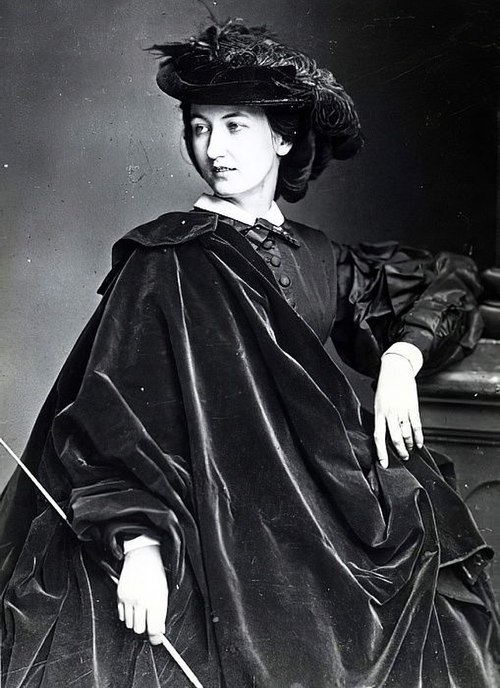
Image licensed under CC BY-SA 4.0? by Antoine Samuel Adam-Salomon
17th February 🗓️ : Holiday - Christian feast day: Janani Luwum (Anglican Communion)
"Janani Jakaliya Luwum (c. archbishop of the Church of Uganda from 1974 to 1977 and one of the most influential leaders of the modern church in Africa. He was arrested in February 1977 and died shortly after. Although the official account describes a car crash, it is generally accepted that he was..."
0 notes
Photo

Happy birthday Lola Montez (or Montes)!
Born on this day in 1821, this Irish dancer and actress was also the mistress to Louis of Bavaria. In 1846, he offered her a castle and named her Countess of Landsfeld. Using her influence, she enacted liberal reforms in Bavaria. However, these reforms were not widely accepted and she was forced to flee at the beginning of the Revolutions of 1848. She then continued to travel the world as an entertainer and lecturer.
(image from: The Marquis Papon... Lola Montes... (DD801 .B383 M65 1851))
29 notes
·
View notes
Text
that one bit in ‘have one on me.’ oh man. the way the vowels get all warped. poor LOW LIE tarantula mounting countess landsfeld’s handsome brassiere as they all cheer
5 notes
·
View notes
Text

Lola Montez, Countess of Landsfeld
Painting by Joseph Karl Stieler, neoclassical portrait, 1847
Eliza Rosanna Gilbert, Countess of Landsfeld, better known as Lola Montez, (17.02.1821-17.01.1861) was the daughter of Elizabeth Oliver and Ensign Edward Gilbert. She was born in Grange, County Sligo in Ireland and grew up in India. After her mother remarried (Eliza's father died of cholera), she was sent back to Britain to go to school. She was known to be a mischief-maker.
She eloped and married a man named Lt. Thomas James at age 16. They separated five years later. Her career as a dancer started in 1844 in Paris when she was 23 years old. There she had an affair with Franz Liszt and after being accepted into the city's Bohemian cirle, she had caused some stirs, which resulted in a duel and a man's death.
In 1846 she travelled to Munich, and was quickly accepted as Ludwig I. of Bavaria's mistress. She was extremely unpopular with the Bavarian people because of her control over the kKing, her arrogance and her Temper. It also didn't help that Ludwig made her a Bavarian citizen (giving her the Title of Countess of Landsfeld). Due to all of this, King Ludwig I. abdicated in favor of his son and Lola fled Bavaria.
She spent her next few years remarrying another man, which resulted in her having to flee Britain due to a bigamy charge. She then travelled around Spain and France, finally deciding to make a new start in the United States of America. Her career was successful there and so was a tour of Australia.
When she returned to America, she spent her last days rescuing 'fallen' women. She dies in 1861 due to tertiary syphillis. She is still known to have been a cigarette-smoking, whip-wielding wild woman. Volbeat (a rock band) have recorded a song about her.
#lola montez#volbeat#dark acadamia aesthetic#dark academia#women in art#women in history#neoclassical art#neoclassicism#syphillis#19th century#joseph karl stieler#joseph stieler#portrait#painting
37 notes
·
View notes
Photo

Eliza Rosanna Gilbert, Countess of Landsfeld (17 February 1821 – 17 January 1861), better known by the stage name Lola Montez, was an Irish dancer and actress who became famous as a Spanish dancer, courtesan, and mistress of King Ludwig I of Bavaria, who made her Gräfin von Landsfeld. At the start of the Revolutions of 1848 in the German states, she was forced to flee. She proceeded to the United States via Austria, Switzerland, France and London, returning to her work as an entertainer and lecturer.
57 notes
·
View notes
Photo
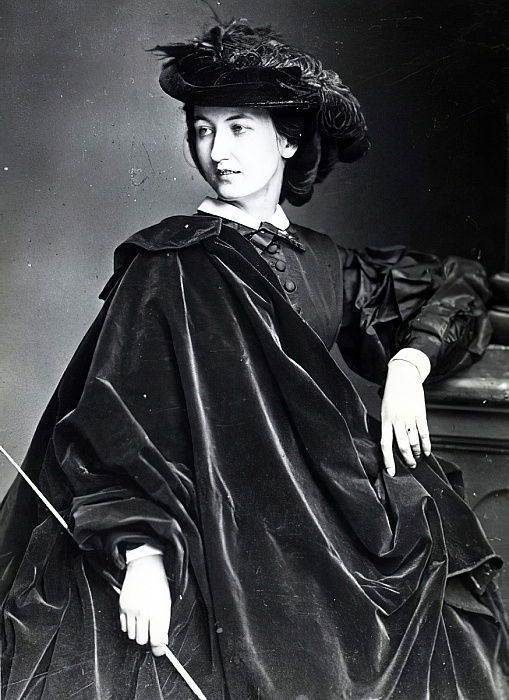
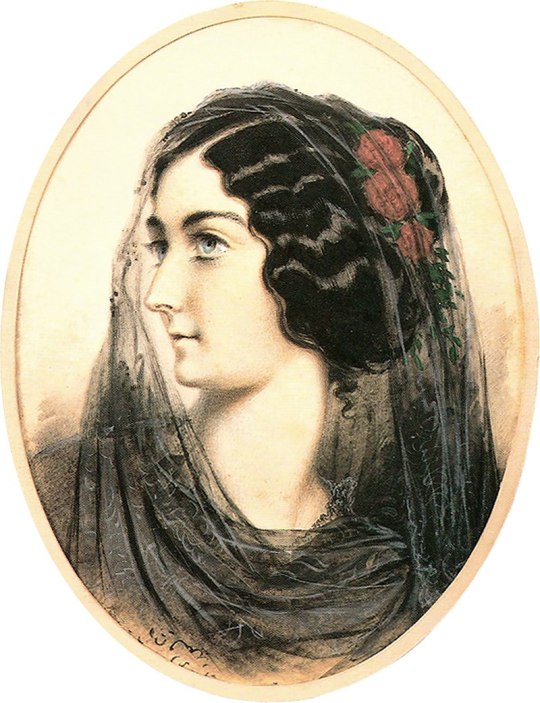
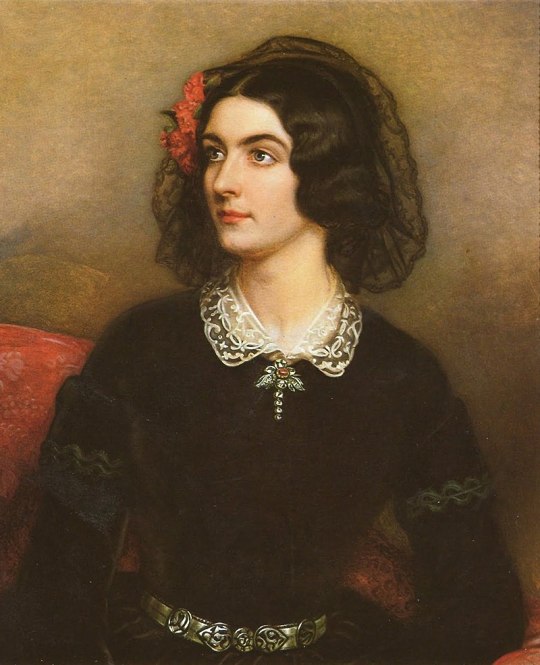
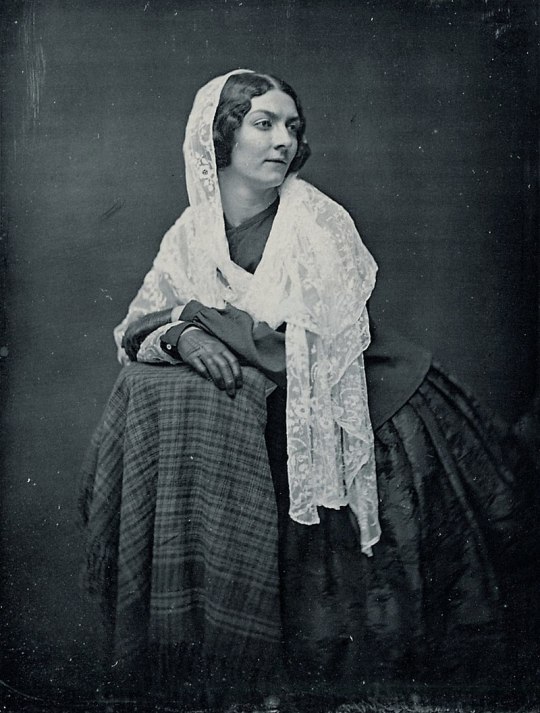
Do you ever think about Lola Montez?
Eliza Gilbert, an Irish dancer and actress who moved with her family to India as a child but then was so mischievous they sent her back to Scotland. How not wanting to consent to the marriage her mother had arranged for her, at age 16 Lola eloped with a visiting officer. How after an unhappy marriage and a family that disowned her and considered her dead, she fell back into her first love, dancing. How she abandoned names given to her by men she didn’t know or despised and took on her stage name, Lola Montez, the Spanish dancer. How audiences in London didn’t accept her because they only saw her as her husband’s wife so she moved to Paris to dance. How prince of Leipzig took to her, made her his mistress then when she proved to be too much for him, he got rid of her by arranging shows for her which led her to Berlin where she was “met with a mixed reception – her sensuality won over the crowd, but her lack of technique and variety offended the critics”. How she then moved to Warsaw and got involved in radical politics. How the manager of the theatre she performed at (who also happened to be Warsaw’s chief of police) didn’t like that so he planted his lackeys in the audience at one of her shows and ordered them to boo and hiss her but it only incited her supporters and a riot almost broke out. How she inspired resistance against the Russian occupation, so the regime made her leave Poland. How she then started a relationship with Franz Liszt. How he opened the doors for her to Paris. How she was friends with George Sand “(with whom, wearing male attire, she smoked cigars)”. How after struggling to establish herself as a performer in Paris she eventually befriended the bohemian side of Paris, including Alexandre Dumas, and was known to be very good at pistol shooting. How she met Alexandre Henri Dujarier, editor of La Presse, who fell madly in love with Lola. How he helped her enter the bohemian class she so loved. How there she found happiness and accepted his marriage proposal. How she didn’t care one bit that her divorce from her first husband made this marriage bigamy in those times. How purely for that they couldn’t officially marry. How one night he went to a party, got into an argument with a journalist from a rival newspaper and challenged him to a duel and got shot. How “Dujarier was killed, and Lola’s heart was broken”. How she moved around Europe, got back to Paris but found it too painful to stay. How she went to Munich, where she got introduced to King Ludwig I of Bavaria. How the public had mixed reactions to her performance but Ludwig had heart eyes for her. How despite the Bavarian people’s disapproval, Ludwig made her Countess of Landsfeld, granting her political power. How she used her influence to increase the salaries of school teachers and against the Jesuits. How wanting to get rid of her, the Bavarian intelligence service dug up dirt on Lola. How the king still came to support her. How as the revolution started across Europe, the counter-protests in Bavaria stood not only against the liberal reforms but also against Lola. How the students at Munich University were divided in their sympathies. How eventually the king revoked Lola’s citizenship and her title of nobility, wrote her arrest order and abdicated his throne. How she fled to Switzerland. How she ended up in London again, married a younger British officer. How his family identified her as Eliza James and she had to flee the country again to avoid arrest because the law said she couldn’t remarry. How her marriage fell apart and she travelled to the USA. How admired she was in America at first. How rather than trying to emulate the professional dancing (that the critics always mocked her for), she embraced the sensuality of her dances and made the absurdity of it into a virtue. How she popularized it with her famous “Spider Dance”, where she played an innocent maid whose clothes had become infested with spiders. How it helped shape the American burlesque scene. How she moved to San Francisco and married a local newspaperman. How a rival theater put on a play to mock Lola and how it was a blistering success. How she moved to Grass Valley and opened a saloon. How she left California to tour Australia with her young lover, along with a group of actors looking for adventure. How the trip was a success but ended tragically when upon the return to America, her lover fell overboard and drowned. How back in America, Lola published a book, The Arts of Beauty, where she articulated the importance of health to beauty. How later in life, as her health deteriorated, she lived a quieter life. How after suffering multiple ailments, she died one month before her 40th birthday. How she was portrayed in several films, how she inspired multiple Victorian novels. How there’s a Joanna Newsom song about her, how there are two lakes and a mountain in California named after her. How throughout her life she chose to live by her own rules. How many lives she lived in her short time on Earth.
Do you ever think how I just wanted to check one thing on wiki and ended up reading multiple sources on Lola Montez? How I couldn’t decide which fun facts about her life to leave out here, because every one is better, more insane and fascinating, than the last? How there was so much I had to put it under read more? Hmm, I do. About all of it, apparently.
Sources: pics, info 1, info 2, info 3, Lola’s book
22 notes
·
View notes
Text
#OTD in 1861 – Death of dancer and courtesan, Lola Montez (Marie Gilbert), in New York. She was born in Grange, Co Sligo.
Famous both for her self-created ‘Spider Dance’, as well as being the inspiration for the expression, ‘Whatever Lola wants, Lola gets.’ Barry Manilow’s 1978 smash hit “Copacabana” tells the story of: ‘Lola, she was a showgirl, with yellow feathers in her hair and a dress cut down to there”. Girlfriend of bartender Tony at the Copacabana, Lola was a character thought up by Manilow, although he…

View On WordPress
#"Spanish dancer"#Australia#California#Co. Sligo#Countess of Landsfeld#Donna Lola Montez#Entertainer#France#Grange#King Ludwig I of Bavaria#lecturer#Lola Montez#London#Munich#New York City#Spider Dance#Switzerland
10 notes
·
View notes
Text
Let it be Known that Marie Dolores Eliza Rosanna Gilbert, Countess of Landsfeld, better known by the stage name Lola Montez, wanted to Free the Titties

5 notes
·
View notes
Text
17 Curious Facts They Never Tell You About The Tyler Davidson Fountain
Since 1871, the Tyler Davidson Fountain has symbolized Queen City pride, gracing Fountain Square, the civic heart of our city. And yet, as this icon approaches its 150th birthday, many Cincinnatians remain unaware of some of its most curious lore.
It’s a drinking fountain.
Yes, the Tyler Davidson Fountain is a work of art but it was designed as a drinking fountain. You can still get a drink from the four statuary spigots surrounding the Genius of Water. The basins under each drinking fountain were intended to provide refreshment for horses and dogs.
Originally, each drinking fountain had an attached drinking cup.
Into the 1800s, before the germ theory of disease caught on, all drinking fountains had metal cups on chains for drinking purposes since slurping from a spigot was considered unseemly. At its dedication, the Tyler Davidson Fountain was equipped with specially designed bronze cups. As late as 1987, at least two of these cups were reportedly still chained in place, although cups at other local fountains had been removed for hygienic concerns.
The fountain once provided ice-cold water.
Underneath the fountain, as originally installed, was a cooling chamber, filled with ice and lined by a network of 2,000 feet of pipe through which the water for the drinking fountains flowed during the summer months. This underground ice chamber measured twelve feet deep and ten feet square, entered through an iron door in the surface of the esplanade.
The fountain is a monument to Temperance.
The Tyler Davidson Fountain is among many Victorian monuments known as Temperance fountains. It was intended to keep Cincinnatians out of the downtown saloons. When Henry Probasco and his brother-in-law and business partner, Tyler Davidson, envisioned the fountain in the 1850s, the only way to get a drink of water in downtown Cincinnati was from a saloon or coffeehouse.
The fountain’s donor ended up broke.
Henry Probasco was among Cincinnati’s richest men. As a partner in Tyler Davidson & Co., wholesale hardware merchants, he built a magnificent mansion in Clifton named Oakwood and collected art and rare books. Twenty years after he paid for the fountain, his money was gone and he was beset by creditors. He sold off the house, the books and the art. Only the intervention of friends, who arranged a job as president of Spring Grove Cemetery saved Probasco from complete destitution.
The fountain’s rededication plaque is on display in Green Township.
When the Tyler Davidson Fountain was rededicated for its 100th birthday in 1971 a bronze plaque mounted on a pedestal was added, explaining the history of the fountain and the generosity of Frederick Hauck, who paid for the restoration. During the 2006 redesign of the Square, the pedestal was placed in storage, where it was discovered by a representative of the German American Citizens League, who talked the city into donating it. It is now on display outside the League’s museum on West Fork Road in Monfort Heights.
The fountain’s bronze is army surplus from Denmark.
In 1864, on his way to unifying Germany, Otto von Bismarck of Prussia defeated the Kingdom of Denmark in a dispute over the Duchy of Schleswig-Holstein. To recoup the costs of the war, the Danes held a national garage sale. The Royal Bavarian Bronze Foundry in Munich purchased many old bronze Danish cannons. Twenty-four tons of this Danish scrap were melted down to create the Tyler Davidson Fountain.
The fountain’s sculpture was considered radically avant-garde.
Legend has it that sculptor August von Kreling designed the fountain one beer-soaked evening at foundry owner Ferdinand von Mueller’s house in Munich. Seized with inspiration, von Kreling sketched his concept for a fountain on a tablecloth, using a lit cigar as his pencil – to the horror of Frau von Mueller. The design was radical because it features actual human beings instead of mythological deities or legendary figures. The foundry owner loved the innovation but could not find a customer for the unconventional design until Henry Probasco wandered into the shop 25 years later.
Fountain Square is, technically, one of Cincinnati’s public markets.
Sometime before 1815, a market was constructed along Fifth Street when that thoroughfare was essentially the northern boundary of the city. By the 1860s, the Fifth Street Market was occupied almost entirely by butchers and almost everyone agreed it was pretty disgusting. When Cincinnati decided to build Fountain Square on the site, the butchers sued and their case went all the way to the Ohio Supreme Court. The butchers lost and, three days later, the city sent an army of workmen, guarded by a battalion of police, to demolish the old market. The butchers claimed that an early deed mandated that the location was to be used as a market in perpetuity. The city obliged by installing a little metal cart for selling flowers. Every year, the mayor ceremonially bought one flower, for one cent, to maintain the terms of the deed.
Fountain Square once featured public potties.
Old photos of Fountain Square show a massive metallic pillar at the eastern end of the esplanade. This structure was functional as well as decorative – it provided ventilation for a “comfort station” or public restroom installed under Fountain Square in 1907. The downtown restrooms were so successful that the city built some more at Peeble’s Corner in Walnut Hills.

A prehistoric earthwork once covered Fountain Square.
Robert Clarke, in his book about prehistoric earthworks constructed by ancient inhabitants of the Ohio River valley, described a huge elliptical mound extending from the west side of Race street nearly to Walnut, and from a little above Fifth Street to a little below Fourth Street. This mound appears on Daniel Drake’s 1815 map of the city.
You can find a piece of the fountain in England.
Although Ferdinand von Mueller (often Anglicized as “von Miller”), director of the Royal Bavarian Bronze Foundry, gave Henry Probasco exclusive right to the designs created by August von Kreling for the “Genius of Water” and associated sculptures, he did sell one piece to another customer. A copy of the young woman giving her father a cup of medicinal water was erected in 1885 near London Bridge. Ten years later, it was moved to Clapham Commons, south-west of London within the Borough of Lambeth, where it overlooks a drinking fountain to this day.
The hands of the Genius of Water are replacements.
When originally installed, the Tyler Davidson Fountain was supplied by two different sources of water. The drinking fountains pumped water from the normal city pipes running along Fifth Street. The decorative fountains up above got a direct feed from the huge water tanks once located atop Mount Auburn. That high pressure made a spectacular display, but also carried along a lot of mud which, in less than a year, clogged up the fountain. A clumsy plumber in June 1872 attempted to improve the flow by reaming out the delicate openings in the hands of the Genius of Waters. The result was a disaster, with waterfall-like spumes deluging the esplanade. The Royal Bavarian Foundry had to send replacement hands for installation. It was reported that the original bronze hands were donated to one of Cincinnati’s medical colleges.
Henry Probasco donated another landmark fountain to Cincinnati.
Well, technically, Probasco donated a fountain to Clifton, which was an independent village at the time. Probasco served as mayor of Clifton before that suburb was annexed by Cincinnati and his grand estate, Oakwood, is located there .Probasco’s second fountain is located on Clifton Avenue at the intersection with Woolper. The Clifton Probasco Fountain, bronze and 10 feet high, is designed to allow comfortable drinking by humans, horses, dogs and birds.
Cincinnati has another sculpture cast at the Munich foundry.
The bronze statue of a Civil War soldier known as “The Sentinel” in Spring Grove Cemetery was also cast at Ferdinand von Mueller’s Royal Bavarian Foundry. It predates Fountain Square. The lonely soldier was sculpted by Randolph Rogers and cast in Munich in 1865.
In honor of Henry Probasco’s gift, Fifth Street was renamed Probasco Place.
Almost as soon as the Fifth Street Market was demolished, Cincinnatians began referring to that portion of the street as “Probasco Place.” City Council attempted to make the name official after the fountain was dedicated in 1871 by asking the city solicitor to draw up an ordinance extending the designation from Vine all the way east to Main. Although the newspapers and several businesses referred to “Probasco Place” in print until 1880 or so, usage eventually drifted back to “Fifth Street.”
Nobody really knows who the naked woman is.
Way back in 1875, just a few years after the fountain was dedicated, Mr. Daniel J. Kenny, an advertising salesman for the Cincinnati Gazette, published a remarkably useful book titled “Illustrated Cincinnati: A Pictorial Hand-Book of the Queen City,” within which he opines that the semi-nude woman leading her joyfully unclothed boy to the bath is, in fact, Thusnelda, wife of Arminius (aka “Herman the German”) who defeated Rome’s legions at the Battle of the Teutoburg Forest in 9 A.D. Which is all well and good, but there is a competing theory that this maternal beauty represents one Lola Montez (aka Marie Dolores Eliza Rosanna Gilbert, Countess of Landsfeld) an actress of Irish and possibly Spanish extraction who was the mistress of King Ludwig I of Bavaria, who was the patron of Ferdinand von Mueller’s bronze foundry. The bottom line is, sculptor August von Kreling didn’t tell and isn’t telling.
#fountain square#tyler davidson fountain#henry probasco#thusnelda#lola montez#agust von kreling#ferdinand von mueller
10 notes
·
View notes
Text
The Crown Season 2: Royal Romances in Art History!
#queen elizabeth ii#the crown#netflix#british royalty#royal family#art#art history#history#royals#royalty#Madame de Pompadour#french royalty#american royalty#pop culture#serious art history#scandal
0 notes